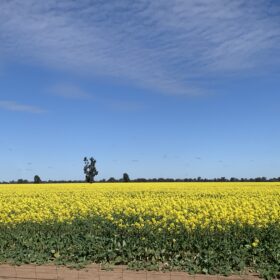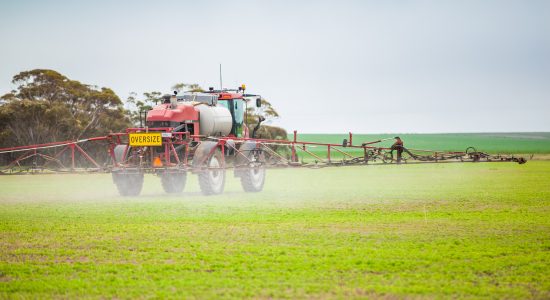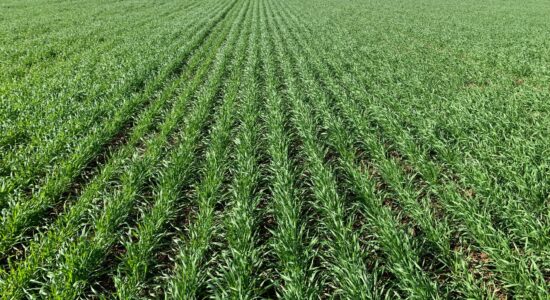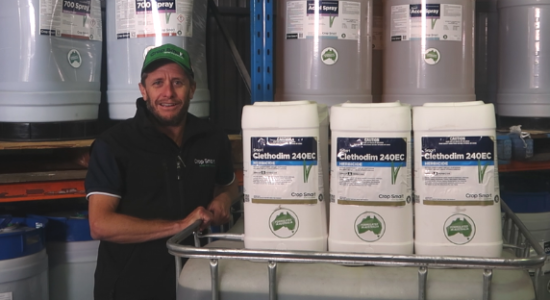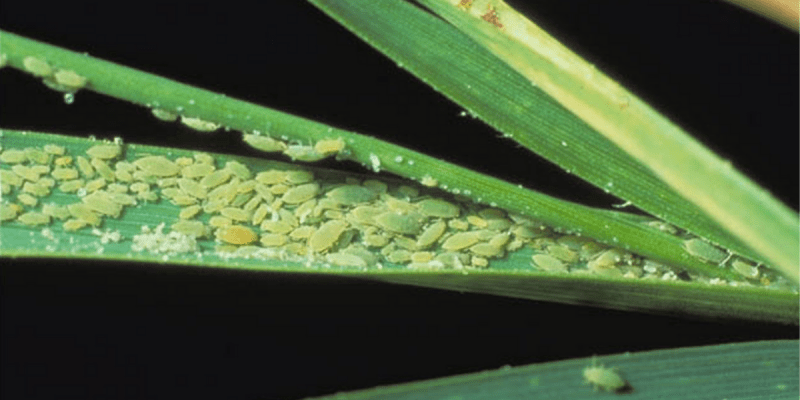
Agronomy Update August 2023
The days are growing longer and the crops are starting to move through their growth stages more rapidly. At this time of the season, understanding herbicide timings are key in avoiding crop damage. Powdery Mildew and Aphids are also appearing across some regions. We’ve got the latest agronomy advice on how best to protect your crops as many of us face these challenges as we head towards harvest.
Late herbicide timings
Care and caution must be taken when selecting late season herbicides in crops. Weed control in advanced crops is problematic for a number of reasons:
- The crop can be large and dense which can reduce herbicide coverage of the weeds
- There are limited herbicide options and they may not be effective on the target weeds
- There can be harvest withholding period restrictions that may limit options
- Weeds are often large and stressed at the end of the season, reducing control
- Some herbicides have residual activity and can carry over to the next season
Check with your agronomist for the best herbicide options for your situation, and for ways to avoid or reduce unnecessary side effects.
2, 4-D Amine
2,4-D Amine is a popular choice for broadleaf weed control in advances cereal crops. It is one of the oldest herbicides available to us and is also one of the most researched. It can be very effective when used in the right situations.
2,4-D Amine 625 Label Standard Crop Timing Post Emergent:
- Apply after the first node can be felt at the base of a tiller and before swelling of the head can be felt in a tiller (NSW, ACT, SA only)
- Apply from tillering to boot stage (VIC only)
- Apply from mid tillering to before boot stage (QLD only)
- Apply at 5 leaf to fully tillered (TAS only)
What is considered Boot Stage? This stage is typically a topic open to discussion and interpretation. The 2,4-D labels also do not help a lot in this regard. Boot stage is classified as Z37 (Zodoks Growth Stage) and this is when the flag leaf is just visible. Spraying after this growth stage is risky as cereal crops become quite sensitive to stress.
2,4-D Amine 625 Label Standard Crop Timing Pre-Harvest Salvage:
- After Dough Stage
- This timing is commonly targeted two weeks prior to harvest
Crop Damage
Application of 2,4-D to wheat and barley after the jointing stage may result in twisted flag leaf, abnormal head emergence and sterile spikelets, which are similar symptoms to drought and frost stress. Treatments made after the dough stage do not result in any visual abnormalities or yield decrease.
Apply 2,4-D using slower application speeds and higher water rates. Spray droplets must be very coarse or larger. Adhere to the spray drift best management practice recommendations for your region.
Other herbicides with later crop stage registrations are;
- Broadstrike (Flumetsulam)
- Lontrol (Clopyralid)
- Paradigm (Halauxifen and Florasulam)
- Starane (Fluroxypyr)
- Triasulfuron
Powdery Mildew
Wheat Powdery Mildew (WPM) has been detected in crops in most cropping regions. It is a challenging disease to maintain control of. The disease requires high humidity but not necessarily rain or leaf wetness to infect the plant.
Powdery mildew can be an aggressive disease and, in some regions, has developed resistance to many of the common fungicides. This makes control or protection of crops difficult. Flutriafol in furrow can provide early season protection where there is no resistance.
The latest research suggests a tank mix of several actives to control Wheat Powdery Mildew as well as other diseases that may be present. A mix that provides protection against several diseases rather than just WPM can lead to the best yield outcomes.
The APVMA has granted permits for the use of the following fungicides in wheat for WPM. Links to permits below.
VIVANDO FUNGICIDE 500 g/L METRAFENONE
LEGEND FUNGICIDE PLUS OTHER REGISTERED PRODUCTS Containing: 250 g/L QUINOXYFEN
TALENDO FUNGICIDE Containing: 200 g/L PROQUINAZID
These products have good activity on Powdery Mildew. They are protectants only with no curative activity, and note that Legend, Talendo and Vivando have no activity on rust. It is best to discuss options and strategies with your Agronomist to find the best solution for your crops.
Aphids
Aphids are also appearing in a number of crops at this time of the year. These include:
- Russian Wheat Aphid in cereals that were not treated with a seed insecticide
- Cereal Aphids. See above
- Cow Pea Aphid in pulses, especially vetch and lentils.
- Cabbage and Turnip Aphid in canola
Aphid numbers can build up quickly in crops but under certain conditions their numbers can decline rapidly. Our advice is to monitor aphid numbers and location within the crop. In some seasons you may find the aphids are restricted to the crop edges only.
If registration of the products allow, you should utilise the products that are softer on the beneficial insects.
Some of the safer insecticides to beneficials are:
- MainMan (Flonicamid)
- Versys (Afidopyropen)
- Pirimicarb
- Transform (Sulfoxaflor)
Insecticide Toxicity to beneficials Table
Be aware of bees and hives. DO NOT spray any plants in flower while bees are foraging.
We hope this information helps to inform your strategy for this late phase of the growing season, and mitigate against some of the risks at play. As always if there is anything we can assist with please reach out to us and we will be happy to help however we can.


